Fairy tale "The Night Before Christmas": the main characters
The fairy tale "The Night Before Christmas" was written by Nikolai Gogol at an early stage of his work. The writer created this work "in one breath." The author had plenty of material to write this story, since he devoted quite a lot of time to the study of folklore and customs that reigned in the Ukrainian village. But most of all, the fairy tale "The Night Before Christmas" strikes with an abundance of colorful living images.
History of creation
This work was written in 1831. The author was then only twenty-two years old, and at that time he had not yet finally made the decision to devote his life to literary creativity. But the success that the fairy tale "The Night Before Christmas" and other romantic works published in the thirties won inspired Gogol to continue writing.
The work revealed to Russian readers the beauty and originality of the Ukrainian region. The fairy tale "The Night Before Christmas" was written not only on the basis of theoretical knowledge of Ukrainian folklore. The writer himself witnessed the bright celebration of Christmas in Ukraine.
Gogol was a man of deep faith, and therefore the main idea of the story, which brought him fame, was the idea that a person is always able to find the strength to overcome evil. The devil from the fairy tale "The Night Before Christmas" is the personification of this evil.
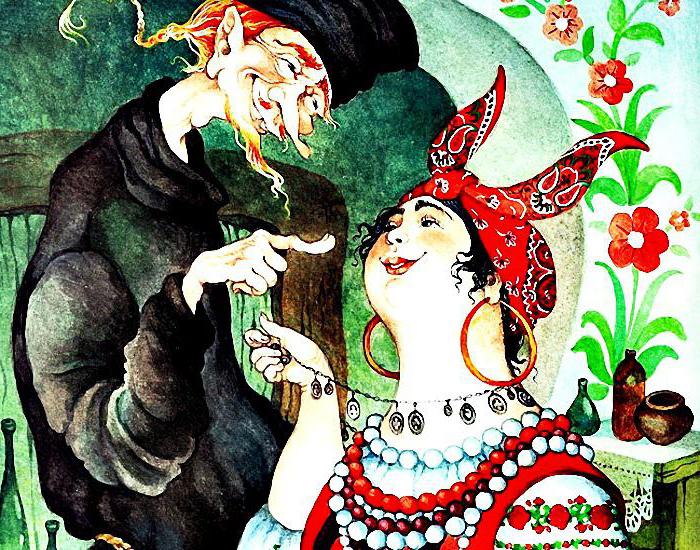
Evil spirits
The representative is depicted in Gogol's work as a cunning, insidious prankster. His numerous attempts to stir up good Christian souls do not always succeed. But the devil from the fairy tale "The Night Before Christmas" is still an extremely stubborn character. Despite all the failures, he does not stop performing his unsightly insidious actions.
Remarkably characterizes the image of the devil by his meeting with Solokha. Here he is depicted as a character, although negative, but quite passionate, and not even devoid of some charm. But, despite the devilish stubbornness and inhuman cunning, nothing comes of the Gogol devil. Good conquers evil. The enemy of the human race is fooled by ordinary mortals.
Image of Vakula
Nikolai Gogol, like many other Russian writers, strove to create an ideal image. And already in his early works, he wanted to portray a person who would become the embodiment of the best national qualities. Vakula from the fairy tale "The Night Before Christmas" became such a hero. This hero is endowed with spiritual strength and beauty. He is brave, smart. In addition, the blacksmith is full of energy and youthful enthusiasm.
The main characteristic feature of the blacksmith Vakula is loyalty to his duty and the desire to keep his promise at all costs.

The heroes of the fairy tale "The Night Before Christmas" are the prototypes of Ukrainian villagers, endowed by the author with fabulous and romantic features. Vakula loves the beautiful but absurd Oksana with all her heart. He is ready to do anything to win her favor. And he decides on a dangerous adventure to get his beloved girl little slippers, like which only one queen wears.
The plot of Gogol's story contains the characteristic features of such a literary movement as romanticism. The hero sets a goal for himself, withstands all sorts of trials, overcomes a long dangerous path, but still gets the treasured cherevichki. It should be noted that, even when in the queen's palace, a simple blacksmith does not lose his composure and retains his dignity. The splendor and wealth of the capital does not appeal to him. Vakula thinks only about one thing - about his small modest house and about his beloved girl, who will soon become his wife.
Main female image
Oksana from the fairy tale "The Night Before Christmas" is a windy and narcissistic girl. At least, this is how it appears in the eyes of the reader at the beginning of the work. She is pretty, and besides, she is the daughter of a wealthy Cossack.
Excessive attention from young people somewhat spoiled her, made her capricious and even cruel. But all these negative features instantly dissipate immediately after the departure of the blacksmith. After some thought, Oksana realized the cruelty of her act. Having given a promise to marry a blacksmith in exchange for royal little boots, she doomed him to death. In any case, she was deeply sure of this during the absence of a young man in love, and therefore she was tormented. But when Vakula nevertheless returned, Oksana realized that she really did not need any wealth. The capricious Cossack daughter eventually fell in love with a simple blacksmith.
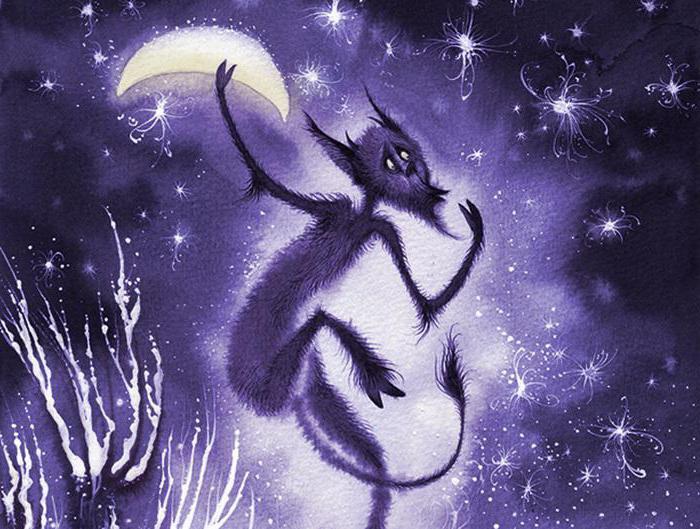
Solokha
Vakula's mother is a cunning, hypocritical and mercenary woman. Solokha is half day, she is a lively village woman. And at night he turns into a witch, driving around on a broomstick. Solokha is a bright and charming woman, which allows her to have a "cordial" relationship with both the clerk and the devil himself.
Genre Feature
There are other bright characters in the story: the clerk, the head, the godfather. The plot was greatly influenced by the traditions of folk tales, in which the motif of trials and journeys is often present. In this romantic tale, one can also find symbols that have a mythological origin. For example, dumplings, which Patsyuk eats with enviable appetite, are associated with the magical power of the moon.

On the example of the heroes of the story "The Night Before Christmas", the author not only depicted human vices, but also expressed the idea that everything bad in a person is discovered sooner or later, and bad deeds never go unpunished.
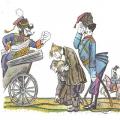 “Lefty” - a summary of the work N
“Lefty” - a summary of the work N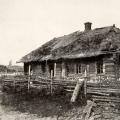 Turgenev, "Biryuk": a summary
Turgenev, "Biryuk": a summary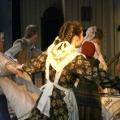 Comedy A.N. Ostrovsky "Poverty is not a vice": a summary of the work
Comedy A.N. Ostrovsky "Poverty is not a vice": a summary of the work